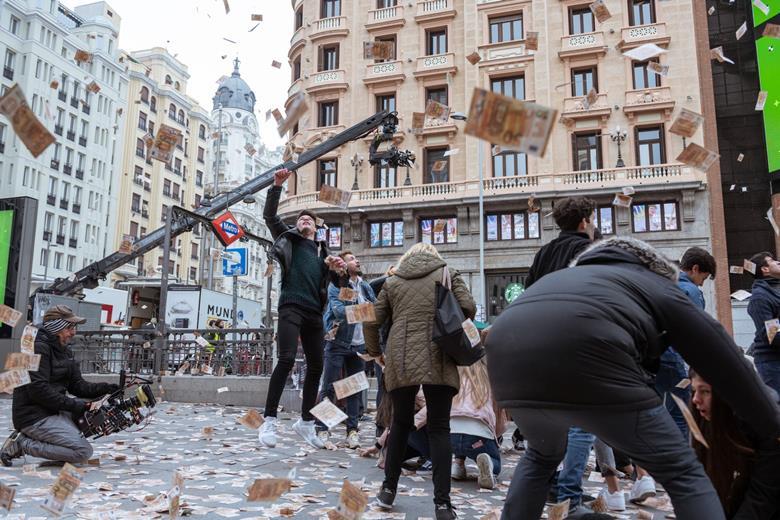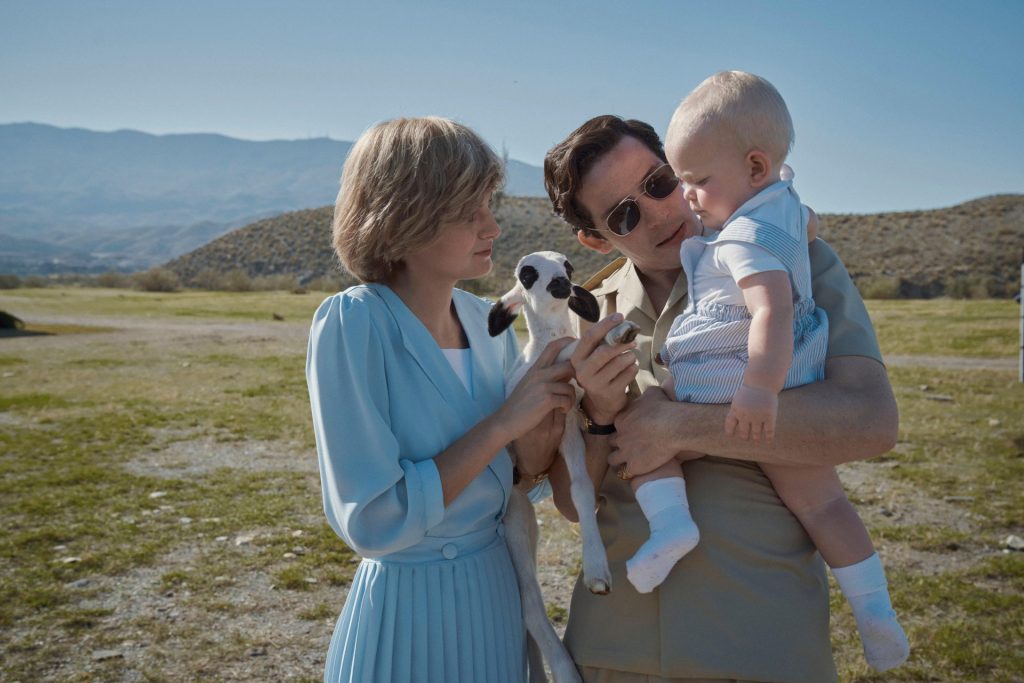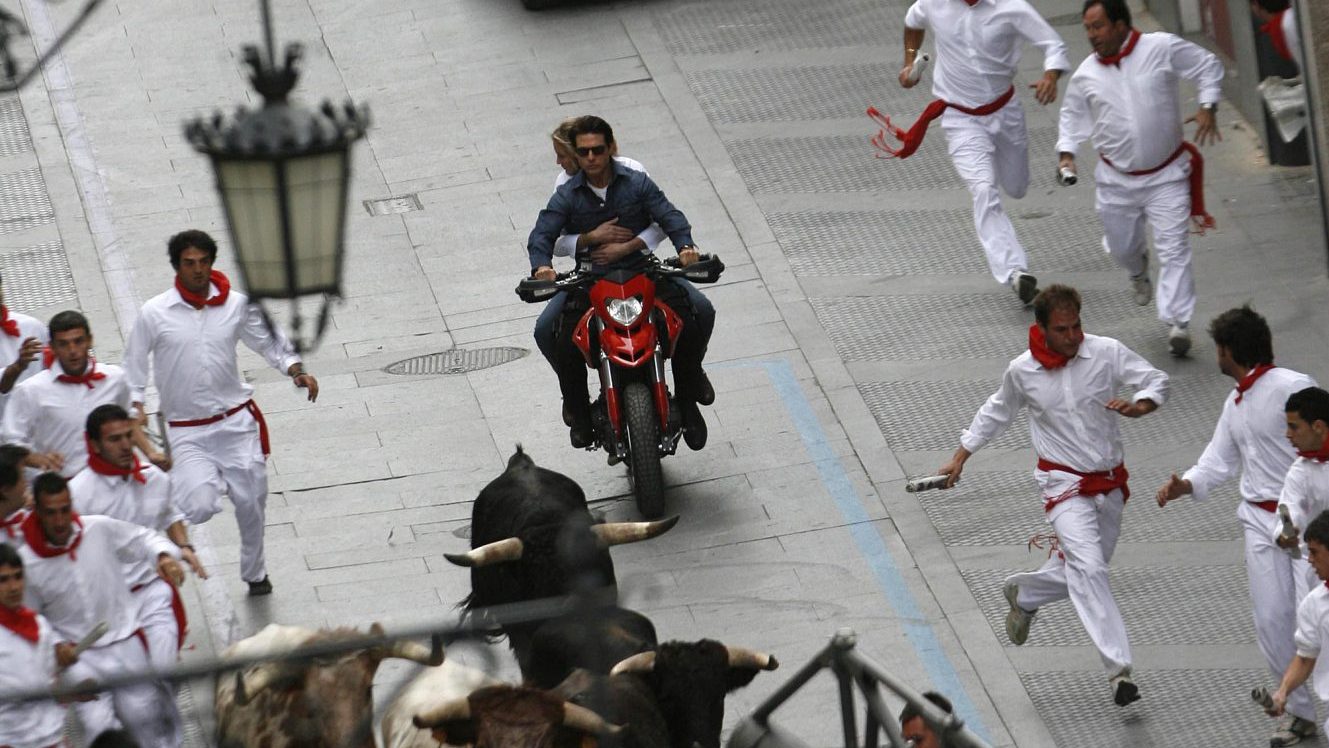Much like Clint Eastwood’s character Blondie after the iconic stand-off at the end of The Good, The Bad and The Ugly – known as a spaghetti western but actually shot in Spain – the Spanish film industry has come back fighting after finding itself stalled by the Covid crisis.
With government support, it is setting itself up as a global go-to film and TV destination. Need a desert, a snowy mountain range and a double for a Middle Eastern settlement? Cancel the flights and PCR tests – these can all be found within Spain’s borders.
The Spanish government responded quickly in May 2020 to enhance the financial incentives designed to attract international production companies and the country’s chameleon-like locations have heard the call of “action” ever since. The financial incentives are huge. Foreign companies shooting there now get a 30% national tax rebate for the first $1.2m of local spend by an international shoot and 25% thereafter.
There are also territorial variations as the autonomous regions operate their own taxation systems. Film-makers in Navarra now benefit from a generous 35% tax credit whilst the Basque Country offers 30% with no quota limit.
The Canary Islands has lured in would-be creatives with even more advantageous rates. From 2020 the tax rebate rose to 50% for the first $1.2m and then 45% for the rest. The per-project cap is set to rise to $21.9m, considerably higher than the $12m cap in place on the mainland.
Even at the height of the pandemic last spring, the archipelago was less impacted than the rest of the country with a shorter, less severe lockdown. This enabled several productions to resume filming in the second half of last year. “The Canary Islands are among the Spanish regions that have best managed to contain the health crisis,” explained Enrica Roberta Martino from Canary Islands Film.

Shooting in interior and exterior locations on the islands is allowed if the safety measures protocol backed by the Ministry of Culture and the main Spanish film associations are followed.
A major new measure adopted in response to the Canaries’ pandemic restrictions is the filming in streaming method. This does not need the director or the heads of department to be physically on the set. The production team and part of the crew can be in their region or country of origin, while shooting interior and exterior locations in the Canary Islands with local crew. The second season of multi awarding-winning Movistar+ drama Hierro was filmed in the archipelago last year and pioneered this new method.
However Spain does lack a major film studio on a par with those in the UK or Germany but with the onset of digital technology and the availability of external and diverse locations throughout the country, this should not hold it back in its bid to become a major global player.
Carlos Rosado Cobián, President of Spain Film Commission admits this is “a problematic shortfall, but digital technology has impacted on shoots and made big studio facilities less essential.”
In addition, its personnel have a good reputation in the industry. Peter Welter of production company Fresco Film notes: “It has excellent crews. We have often worked with all-Spanish crews and the big studios have trusted us.”
The production boom is partly being driven by the major US streaming platforms attracted to the country for its locations and also as a content provider for the vast Spanish-speaking market.
Streaming giant Netflix chose Spain as the base for its first European production hub and has invested heavily in committing to a long term future there.
In 2019 it took over and upgraded the existing Secuoya Studios in the suburb of Tres Cantos, just north of Madrid. The site is managed by media company Grupo Secuoya, which will service all Netflix productions that shoot at the facility. It is also well placed for the Spanish-speaking market with production services across Latin America in Chile, Peru, Columbia and Mexico and a team in the US.
Secuoya Studios is looking to make up for the lack of a major studio in Spain with its ambitious Madrid Content City project in Tres Cantos. The 22,000 square metre site includes five sets, production services, offices and an auditorium. The next building phase is due to be completed by Spring 2022 and will add five additional soundstages, offices, services and a university campus.
Netflix filmed parts of its blockbuster series, The Crown, throughout Spain. Jerez de la Frontera, Sotogrande and Seville all became home to the cast of the controversial series which follows the life of the British Royal Family.
During its third season, viewers were transported to the Convent of Santo Domingo in Jerez which was transformed into a hospital. Helena Bonhan Carter in her role as Princess Margaret, supposedly travels to Los Angeles or rather the Hotel Alfonso XIII in Seville, one of the most famous locations in the city.
Spain also doubled for Australia for the recreations of Charles and Diana’s 1983 tour, with a scene in which well-wishing Brisbaners shout “we love you” from their skyscrapers to a sunbathing Princess Diana, played by Emma Corwin, filmed on the balcony of the AC Hotel Palacio in Malaga. The couple’s visit to Uluru was filmed in Almería, a Hollywood-approved location since the 1960s.
“These are extraordinarily wealthy people and this has to show,” said production designer Martin Childs. “Spain offered a great deal in terms of architecture that we could call Australian. Not the whole of Spain but a relatively small triangle of Spain, so we still have plenty left. It offered Nassau too.”
HBO has strong ties to the country after filming parts of its hit TV show Game Of Thrones there. During the fifth season, the 700-year-old Andalusian palace the Royal Alcázar of Seville appeared as the Water Gardens of Dorne, seat of the House Martell of Sunspear. This UNESCO World Heritage site is Europe’s oldest still-in-use royal palace, the upper chambers being residences for Spain’s royal family.
Navarra’s Bardenas Reales Natural Park, a lunar-esque, semi-desert landscape in the north of the country, doubled for the Dothraki Sea in season six.
Various locations around the country were used for Amazon Studios’ Emmy-nominated series Hanna, including the Bardenas desert. “We did a first scout based on the script, where most of the sequences were supposed to happen between Morocco and any place in the south of Spain,” says Ana Ibañez, a location manager on the series. “We were trying to find locations similar to Morocco to try to avoid travelling to another country. After the director’s scout, we were able to recreate many scenes in Almería.”
Recent US film projects to have chosen Spain include Paramount/20th Century Studios’ Terminator: Dark Fate, which was filmed in the Murcia region in the south-east of the country to double for Mexico and Warner Bros’ Wonder Woman 1984, which was shot in the ever-popular Almería and the Canaries.
The autonomous regions each have their own film commissions, and in addition to Secuoya Studios, there are also facilities in the city of Terrassa in Catalonia and in the Canary Islands.

One of its key selling points is its variety of locations. Heritage and modernity sit side by side. Major cities Madrid, Barcelona, Seville and Valencia contain a range of architectural styles, as do the Islamic-influenced cities of Cordoba and Granada. From Almería’s Tabernas Desert to the snowcapped Sierra Nevada and Pyrenees and the volcanic moonscape around Tenerife’s Mount Teide, the country has a range of eye-catching backdrops. This Iberian chameleon has successfully masqueraded as the frozen expanses of Siberia, the plains of Afghanistan, the chic French Riviera, Cuba and Thailand.
Spain already has a long-established film making pedigree, having been the setting for a who’s who of cinematic greats – A Fistful of Dollars, A Few Dollars More, The Good, The Bad and The Ugly, Lawrence of Arabia, Dr Zhivago, Cleopatra, Clash of the Titans and Jason Bourne.
In the early 1960s, Almería attracted filmmaker Sergio Leone, who built his very own Wild West settlement near the town of Tabernas and used it as the main location for his Dollars trilogy. Originally known as Yucca City, the set was designed by Carlo Simi and remains there to this day.
In 1962, David Lean’s Lawrence of Arabia was supposed to be filmed in Jordan, but a combination of expense and crew illness led to it being filmed mainly in Almería.
After its success, Lean chose the country again for his 1965 epic romance Dr Zhivago. Filming in Russia, where the story is set, was not an option because the book was banned there. Lean was assured that there would be snow for his wintry epic, but found himself in one of the hottest winters on record. The actors, wrapped up in their Russian fur hats, were actually sweltering in central Spain.
The shadow of Brexit looms large over the sector and the ensuing red tape, as for so many others, has caused headaches for UK production companies looking to shoot there. They are keen to use Spanish locations but have faced logistical hurdles ahead of planned shoots as all UK workers providing creative services now require a visa.
“We are having to wait too long for the paperwork to be sorted by the consulate in London,” noted Fresco Film’s Peter Welter. “The formalities and the cost to obtain working visas to come and shoot in Spain could turn some companies away. Something needs to be done urgently.”
According to the Spain Film Commission, the Spanish government is working to address these complications and ease the access of UK crews to the country.
In the aftermath of the pandemic, Spain is looking to ride off happily into the sunset on the back of its burgeoning film and TV industry and impressive blockbuster heritage. As they would say, that is a wrap….

Warning: Illegal string offset 'link_id' in /mnt/storage/stage/www/wp-includes/bookmark.php on line 357
Notice: Trying to get property 'link_id' of non-object in /mnt/storage/stage/www/wp-includes/bookmark.php on line 37







